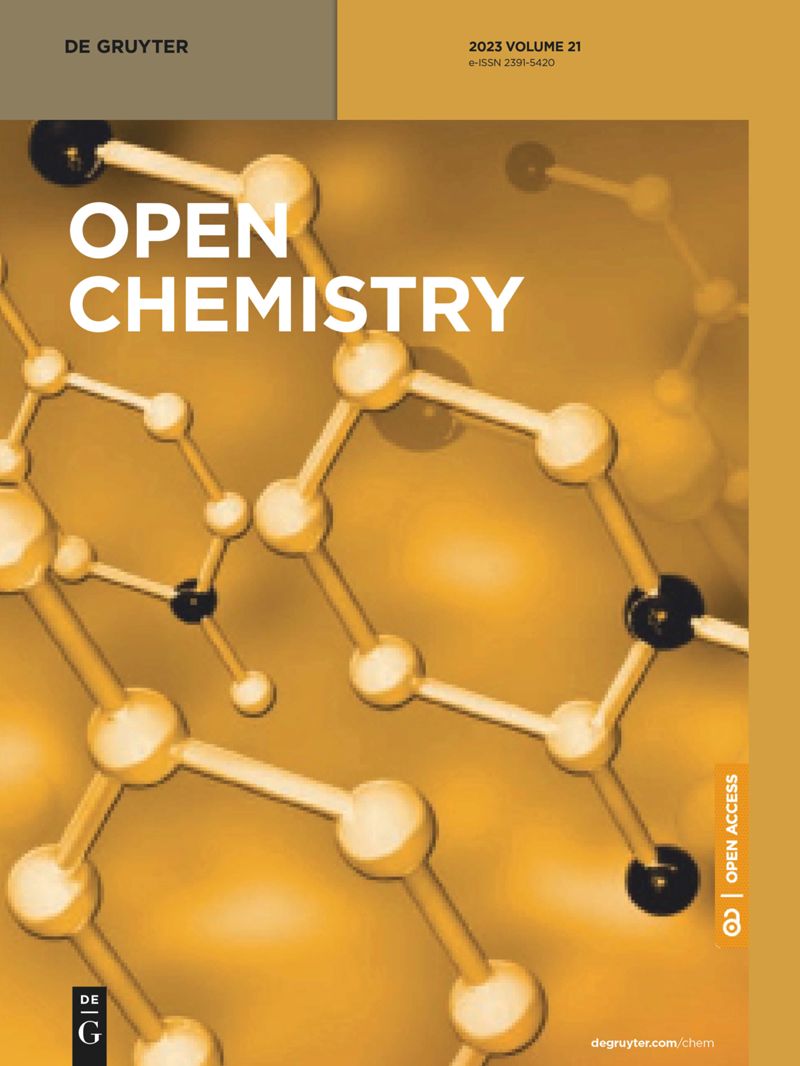Integrated track of nano-informatics coupling with the enrichment concept in developing a novel nanoparticle targeting ERK protein in Naegleria fowleri
IF 1.9
4区 化学
Q3 CHEMISTRY, MULTIDISCIPLINARY
引用次数: 0
Abstract
纳米信息学与富集概念在开发针对奈格勒氏菌ERK蛋白的新型纳米粒子过程中的集成跟踪
奈格勒氏菌(Naegleria fowleri)是一种自由生活的阿米巴,可引起原发性阿米巴脑膜脑炎。尽管采用了联合药物疗法,但奈格勒氏菌对目前的药物疗法并不敏感,导致该病原体的死亡率高达 98%。为实现合理的药物设计,本研究提出了一种纳米技术与富集概念相结合的综合方法。在目前的研究中,氧化锌纳米粒子(ZNP)针对 ERK 蛋白进行了筛选,ERK 蛋白负责产生促炎细胞因子,在 N. fowleri 感染时导致脑功能紊乱。此外,还进行了富集分析,通过添加两个胺和一个氯基来提高 ZNP 的效率。对 ZNP 的 zeta 电位、细胞毒性、器官毒性、结合自由能计算和 ADMET 分析的计算预测结果表明,ZNP 是稳定的,没有毒性作用。胺+氯富集 ZNP 的结合能为-7.8 kcal/mol,ZETA 电位可靠性为-40 mV,细胞毒性为-0.0002,对所有靶器官模型无活性,ADMET 分析表明其分子量为 320.54 g/mol,亲油性为-0.99,水溶性高,胃肠道吸收性好。这项拟议的发明代表了未来在体外抗击这种毁灭性疾病方面的工作,其目标是通过专门抑制感染的药物找到可靠的治疗靶点。
本文章由计算机程序翻译,如有差异,请以英文原文为准。
求助全文
约1分钟内获得全文
求助全文
来源期刊

Open Chemistry
CHEMISTRY, MULTIDISCIPLINARY-
CiteScore
3.80
自引率
4.30%
发文量
90
审稿时长
6 weeks
期刊介绍:
Open Chemistry is a peer-reviewed, open access journal that publishes original research, reviews and short communications in the fields of chemistry in an ongoing way. The central goal is to provide a hub for researchers working across all subjects to present their discoveries, and to be a forum for the discussion of the important issues in the field. The journal is the premier source for cutting edge research in fundamental chemistry and it provides high quality peer review services for its authors across the world. Moreover, it allows for libraries everywhere to avoid subscribing to multiple local publications, and to receive instead all the necessary chemistry research from a single source available to the entire scientific community.
 求助内容:
求助内容: 应助结果提醒方式:
应助结果提醒方式:


